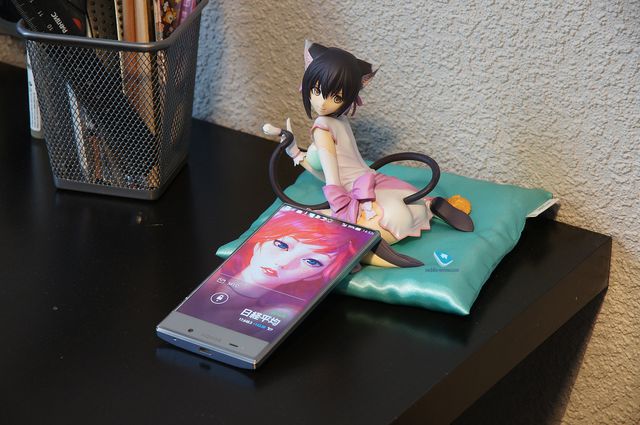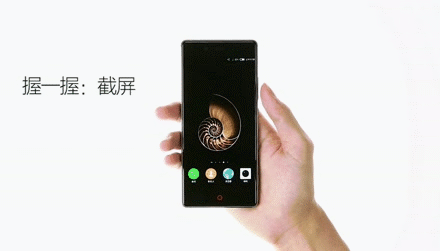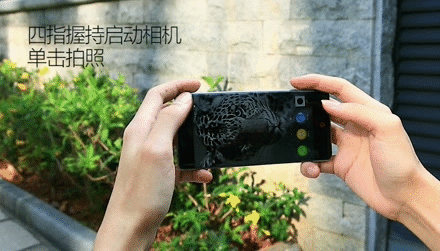Is the future bright for the smartphones we are used to, or are their days already numbered? A few words about problems with components, frameless smartphones and rumors about a new one iPad.

This week was surprisingly stingy with interesting events. The news is mostly boring, there are practically no things to talk about. I would like to believe that this is just the calm before the storm, but it could just as well be the beginning of a long calm. And a blasphemous thought persistently creeps into my head – what if nothing fundamentally new can be invented and the development of smartphones has reached its peak?
At first glance, the thought seems completely wild. Technological progress does not even think to slow down, new processors, camera modules, types of screens and other “iron” components of smartphones appear almost every month, so why start to panic? On the other hand, any device is not just a set of chips, but the idea behind them. And the very fact of replacing one component with another is not yet development. If you take the Nokia 3310 and install an eight-core processor in it, it will not cease to be the Nokia 3310. This 'improvement' will not give customers any advantages and will only add unnecessary problems.
Not so long ago, it seemed to all of us that the development of mobile phones could not be stopped. What kind of stagnation can we talk about when something new, unusual and incredibly interesting comes out every year? But in reality it stopped, and for a very long time. And let the slight confusion in terminology not let you get confused – the devices that we called 'mobile phones' then are not modern smartphones at all, but cheap push-button 'dialers'. Today's smartphones with huge touch screens are more analogous to extinct PDAs than phones of those years.
Does technological progress greatly help the development of modern 'dialers'? How often do we see something really new in this segment? In practice, most of the existing clamshells and push-button monoblocks practically do not differ from those models that were on the market 6-7 years ago. And if some Siemens C60 were on sale now, it would have sold even better than its modern counterparts. These devices have practically nowhere to develop, they have reached their ceiling. And the presence of a mass of new technologies and even communication standards does not change this fact in any way.
Most likely, someday something similar will happen with modern smartphones. Development will shift primarily towards third-party software that can be installed on any more or less modern device. New programs will appear, new 'smart' accessories will be created, but smartphones as devices will practically stop developing. We will buy a new smartphone and read reviews of new products only if the previous device fails. And even then, most likely, we will begin to buy the first device that caught our eye, without going into any unnecessary details like processor model or screen resolution. What's the point in this when all smartphones have had these parameters for a long time already redundant? Maybe there will be a thousand ppi, or maybe all two – the difference is still not visible even under a microscope. So why bother with insignificant technical details?
In fact, everything has been going towards this for a long time. Manufacturers increasingly stop focusing on specific components, and technical terms are gradually being replaced by generic marketing names. For example, any technology owner Apple knows the term 'Retina display', which refers to a high-resolution screen with excellent ppi. But what specific resolution are we talking about? Much less people think about this. Especially when you consider that different products of the company apply the term to different screens, from tiny smartphone displays to giant iMac monitors.


At one time it was fashionable among journalists to use the term Retina when describing any high-quality screen of any company, which was frankly annoying. You read the review of last year's flagship, and there the 'Retina display' was understood as a screen with HD resolution, you open the review of its successor – and again there is a 'Retina display', only the resolution is already FullHD. So compare them with each other as you want. Fortunately, then this fashion did not take root, and the word Retina can now only be heard in relation to products Apple. But the funny thing is that what a couple of years ago seemed frankly stupid and completely inconvenient, after a couple of years later it may return to use on completely legal grounds. The term 'Retina display' will denote a resolution that can no longer be determined with the naked eye, but with a direct comparison of different smartphones, and this is 2K or 4K, no one really cares.
And if we look at the camera modules, we will see that something similar happened a long time ago. First of all, thanks to Samsung, which, due to its solid sales volume, constantly has difficulties with a lack of components. As a result, smartphones of one and the same, at first glance, brand may have completely different hardware. Usually, attention is focused on processors, which can be either of our own production or from third-party suppliers like Qualcomm. Some buyers even try to choose a model with a specific processor. But the same situation occurs with camera modules, only no one pays attention to this for a long time. Buyers know that the new flagship shoots at such and such a quality level (which is usually denoted as 'wow, better than iPhone') – and no one cares what exactly in this particular version of the smartphone is for the module. This is completely unnecessary and unnecessary information, no one will waste time trying to figure out what is there and how. It just doesn't matter to buyers.

You don't have to go far for examples – it has recently become known that both a Sony module (Sony IMX240) and a module manufactured by Samsung can be used in the new flagships Galaxy S6 and S6 Edge, which are traditionally praised for the quality of photos. But I highly doubt that there are many people in the world who will somehow be interested in this news.
Link to news
The next news concerns protective glasses in smartphones HTC One M9. Everyone knows that there (as in the vast majority of other non-budget smartphones) they use a protective Gorilla Glass coating. But if you believe the insider @upleaks, it could be either the third or the fourth version.

Link to news
If earlier these games were played mainly by large manufacturers, now smaller companies will inevitably join them. So, according to analysts' forecasts, due to the imminent start of production of a new iPhone, many Chinese smartphone manufacturers may now face a shortage of Sony camera modules. It is assumed that Huawei will be able to meet about half of their needs for such modules from the Japanese supplier, and companies such as Oppo and Coolpad – no more than a third. Since nobody plans to reduce the production of smartphones from them, it is easy to assume that the rest of the devices will have to install camera modules from Samsung, Toshiba or OmniVision.
Link to news
In order to somehow stand out from competitors' products, manufacturers will have to remember such a forgotten thing as unique design. Moreover, modern technology allows you to create truly fantastic devices, and services like MotoMaker will help make any smartphone unique.
The problem is that you won't be full of technologies alone. You still need to be able to apply them correctly. In fact, all this is nothing more than paints that can be used to paint both a stunningly beautiful picture and an indistinct smear.
An example is the idea of frameless smartphones. Here is a photo of the well-known Sharp Aquos Crystal with very thin side frames.

And here is the recently announced ZTE Nubia Z9, which some call the first 'fully frameless' smartphone. As for the case materials, they use metal and glass.

There is no dispute about tastes, but, in my opinion, the 'old man' Aquos Crystal looks much more interesting outwardly. Although from a technical point of view, the ZTE Nubia Z9 is definitely much cooler. Take at least the same FIT (Frame Interactive Technology) technology, which made the edges of the smartphone sensitive to different types of pressure. Swiping along the edge of the smartphone allows you to lock or unlock the screen, squeezing the smartphone in your hand – to take a screenshot, and so on.



The main technical characteristics of the smartphone are as follows:
- Support for communication standards: 4G LTE (TD / FDD), 3G TD-SCDMA / WCDMA (850/900/1900/2100 MHz); CDMA 1x and EVDO 800 MHz; GSM 850/900/1800/1900 MHz; two slots for SIM cards
- Dimensions: 147.4×68.3×8.9 mm
- Weight: 192g
- Processor: eight-core, support for 64-bit instructions (4×2 GHz Cortex ARM A57 + 4×1.5 GHz Cortex ARM53) Qualcomm Snapdragon 810
- Platform: Android 5.0 Lollipop, nubia UI 3.0
- Display: 5.2-inch, resolution 1920 x 1080 pixels, bezel-less design
- Camera: 16 MP (IMX234 Exmor RS), IR cut filter, support for 4K video, optical image stabilization
- Front camera: 8 MP (IMX179 Exmor R), IR cut filter
- Audio Features: 32-bit AKM AK4375 audio codec, 7.1 channel audio support, Dolby Audi o and DTS
- Memory: 3/4 GB RAM (LPDDR4), 32/64 GB internal
- Communications: Wi-Fi 802.11 b / g / n / ac (2.4 / 5 GHz), Bluetooth v4.1, NFC, USB, GPS, IR port (as a remote control), audio jack 3.5mm
- Battery: 2900 mAh
- Others: Accelerometer, Gyroscope, Electronic compass, Dual Hall sensor, Light and proximity sensors
Link to news
The tablet market may stagnate even earlier. Already it is not entirely clear how to get buyers to switch their old tablet to a new model, and in the future it will become even more difficult. Manufacturers will obviously try to do this at the expense of models with a larger screen diagonal, but so far it is not very likely that this technique, which has shown itself well in the development of smartphones, will be able to 'shoot' even here.
Certain hopes can be pinned on the release of a new one iPad, which, according to rumors, is not far off. Judging by the leaks of varying degrees of reliability, we will see a iPad Pro with a diagonal of about 12 inches. The whole question is whether the company will be able to surprise customers with something other than the size of the display, or they will be limited to one thing.
The Force Touch technology, an NFC module with a set of some unusual accessories and Bluetooth – a stylus are now called among the possible 'chips' of the tablet.
Link to news
Nature abhors a vacuum, and if smartphones really reach their ceiling and stop developing, then something else will come in their place. Most likely wearable electronics of all colors and sizes. Yes, today all these 'smart' watches and 'smart' glasses are not very impressive, but the first PDAs were also a very niche thing. And now almost everyone has such a 'PDA' in their pockets, regardless of their age, occupation and social status.
Will the phone display be so important if the picture will be immediately displayed on contact lenses, glasses or even the retina of the eye? Will anyone care about the design of the device if it practically ceases to be taken out of the pocket, displaying all notifications and controlling it from the screen of a smart watch or the cuff of clothes? Or when a tablet folds down to the size of a credit card, and smartphones roll up into a compact tube? And how many people will even be ready to use this “old-fashioned technique” when all its functions will duplicate “smart” wearable devices and even wardrobe items? Against this background, smartphones will no longer be so 'smart' and will become something like a modern 'dialer'. And the new generation of mobile devices will have to offer users something much more.
So far, such a scenario seems to be outright fantasy, but who knows what will happen to mobile technology in a couple of years.



